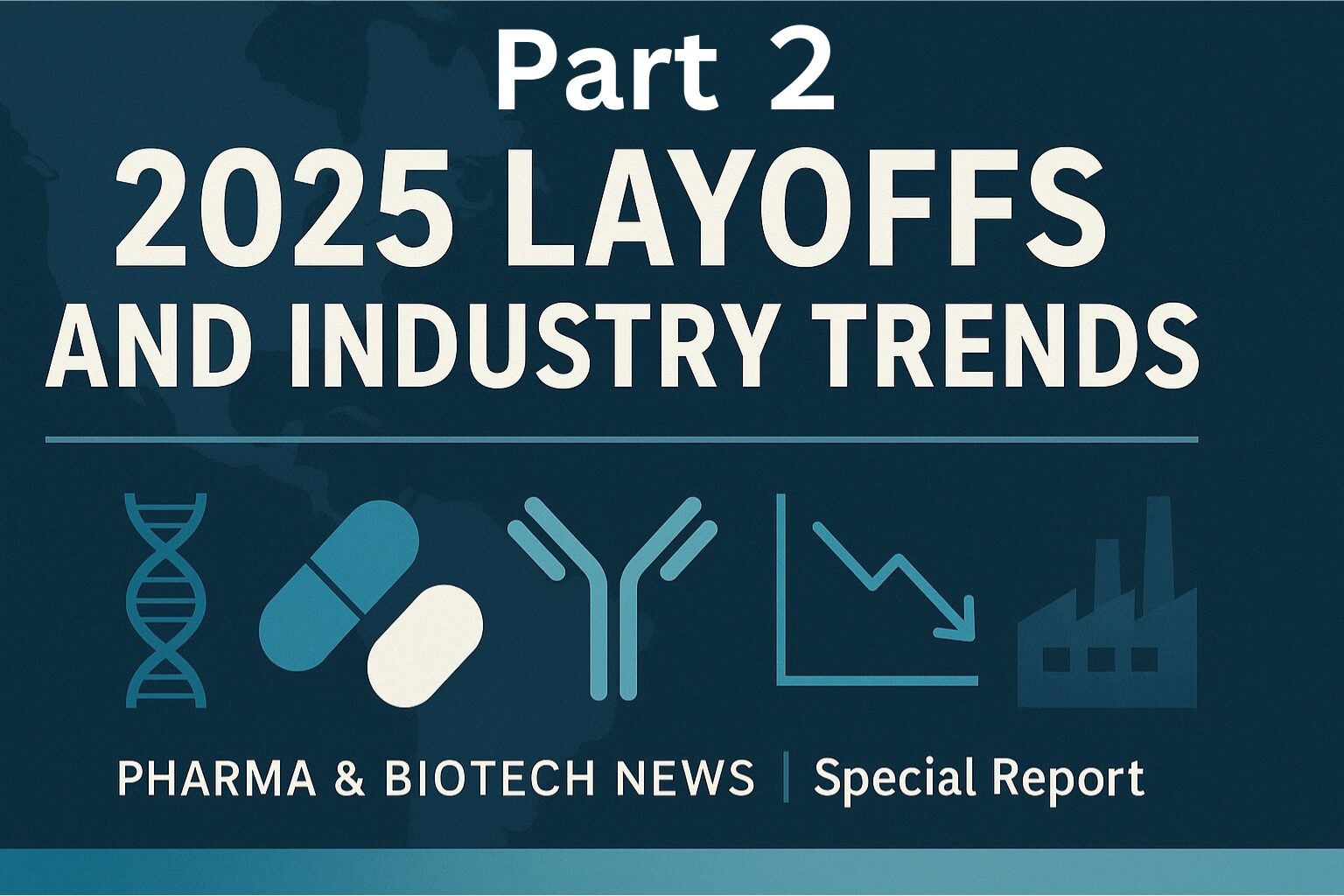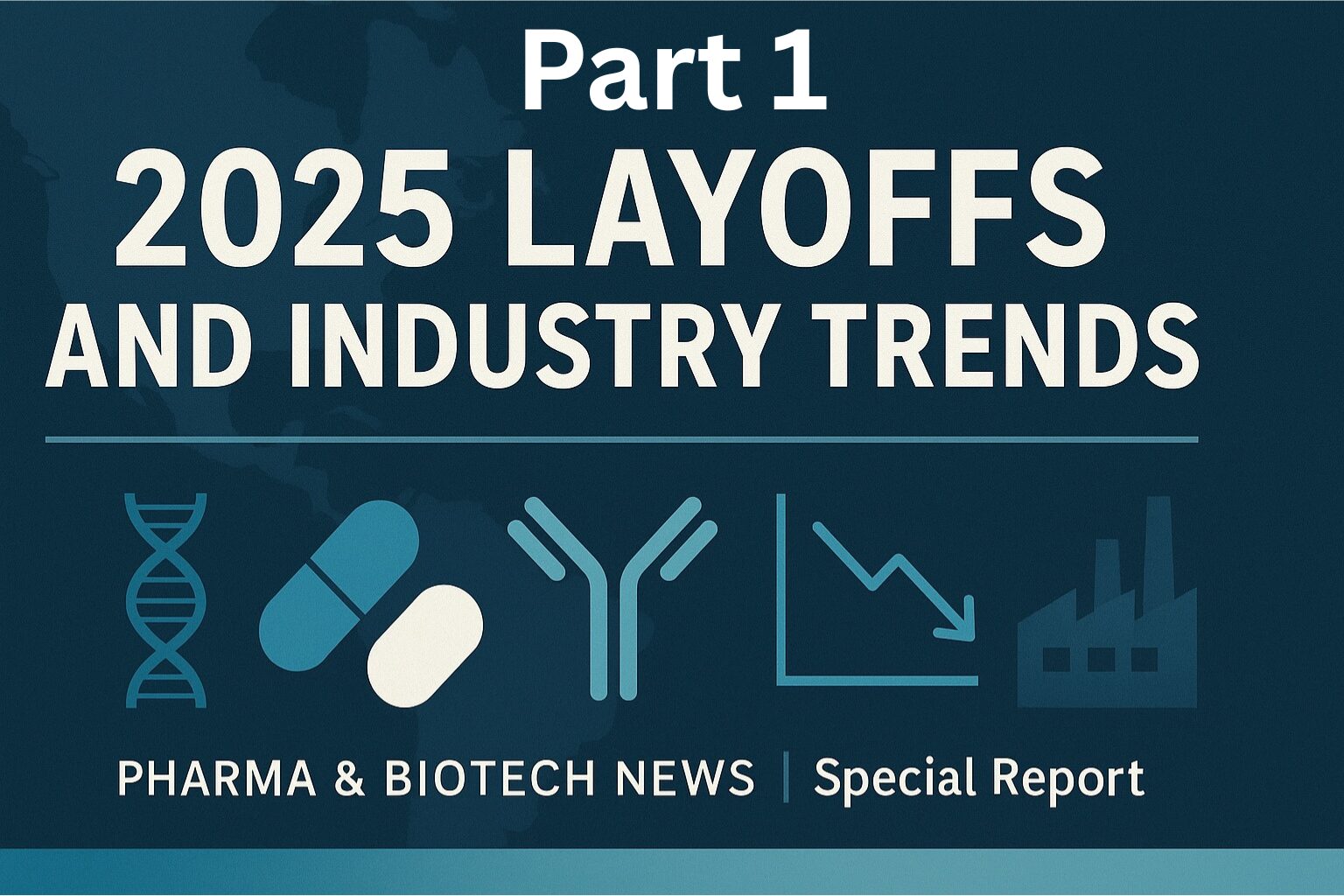Category: Pharma & Biotech NEWS | Series “Reading 2025 Layoffs” — Part 3
Key Takeaways
- The “capital-efficiency equation” is modality-specific: even with similar P2 wins, cell/gene/RNA/antibody–degrader programs require very different org designs.
- Layoff pressure clusters where CMC × regulation × access clog: scale-up, quality consistency, and evidence-to-pricing translation drive workforce redesign.
- Winners compress time-to-POC and pre-wire rights: hybrid make–buy manufacturing and early co-promo/territorial designs stabilize both hiring and development.
Purpose
We analyze 2025 workforce actions by modality through the lenses of CMC, regulatory, and commercialization (pricing, reimbursement, supply). Instead of anecdotes, we provide portable operating logic and end with a practical playbook.
Cell Therapies (Autologous/Allogeneic CAR-T, TIL)
- CMC: materials variability, vector/cytokine supply, yield and TAT stability require thick MFG/QA/QC staffing—then periodic optimization by phase.
- Regulatory: sameness (allo) vs. one-patient-one-product (auto) equivalence; TME hurdles in solid tumors demand combinations, local delivery, switches.
- Commercial: site accreditation, logistics, and cost recovery must be designed early; delays in access often trigger org slimming.
Workable path: phased in-house for process development, KPI-bound CDMO later; narrow & winnable indications; outcomes-linked pricing plans early.
Gene Therapy/Editing (AAV, LNP, CRISPR/Base Editing)
- CMC: capacity and consistency at scale (AAV impurities, LNP raw-material stability) dominate.
- Regulatory: long-term follow-up and safety responses; post-first-win expansion hinges on agency/KOL convergence.
- Commercial: one-time treatments need long-horizon value narratives; design RWD capture early.
Workable path: bank POC in rare monogenic settings, then expand with capacity-aware cohorts.
mRNA (Post-COVID Optimization)
- CMC: platform exists; stability/storage and cost-to-serve are battlegrounds.
- Regulatory: new indications (oncology/autoimmunity) hinge on validated immunologic correlates.
- Commercial: escaping seasonal demand and easing personalization burdens shape staffing.
Workable path: shared LNP/backbones to lower COGS; “quasi-personalized” ops in oncology.
RNA Medicines (siRNA, ASO, lncRNA, tRNA)
- CMC: scalable chemistry, but delivery/off-targets matter; organ-selective delivery is the edge.
- Regulatory: accumulated class experience but higher bar for lncRNA/tRNA preclinical rigor.
- Commercial: adherence and clinic workflow drive adoption; bake operations into trial design.
Workable path: leverage hepatic platforms and extend across organs; externalize non-core early.
Degraders/Next-Gen Small Molecules
- CMC: small-molecule strengths (scale/cost) with permeability/selectivity/PK optimization as the decider.
- Regulatory: growing class experience rationalizes monitoring and sample sizes.
- Commercial: biomarker-linked P2 quality is the swing factor; pricing must withstand SOC comparisons.
Workable path: lock biomarkers and combinations early; pre-wire co-promo/territorial rights.
Antibodies/ADCs/Bispecifics
- CMC: mAb production is mature; ADCs hinge on linker/DAR control and supply reliability.
- Regulatory: efficacy–toxicity management sits at the center (ocular/hepatic risks, etc.).
- Commercial: crowded landscapes; differentiation via indications, combinations, dosing cadence.
Workable path: design for volume early; co-create indication/combination “win paths” with KOLs.
Risk–Cost–Access Matrix (Quick View)
| Modality | CMC Difficulty | Regulatory Load | Commercial Hurdle | Key to Capital Efficiency |
|---|---|---|---|---|
| Cell Tx | High | Mid–High | High (sites/access) | TAT/yield, focus indications, early access plans |
| Gene Tx/Edit | High | High (long follow-up) | Mid–High (one-time pricing) | Rare POC → staged expansion; capacity plan |
| mRNA | Mid | Mid | Mid (seasonality/personalization) | COGS down; ops-light personalization |
| RNA | Mid | Mid | Mid (adherence) | Organ-targeted delivery; clinic ops |
| Degraders/SMOL | Low–Mid | Mid | Mid (SOC competition) | Biomarkers; combinations |
| mAb/ADC/BsAb | Mid | Mid | Mid–High (safety/supply) | Volume design; indication/combination diffs |
The Capital-Efficiency Equation
Capital efficiency = f(time-to-POC, CMC maturity, regulatory clarity, reimbursement narrative, competitive density)
- Time: shorter paths reduce dilution—design intermediate markers/surrogates.
- CMC: hybrid make–buy to variable-ize fixed costs; multi-source supply.
- Regulatory: surface sameness/safety issues with early advisory engagement.
- Access: embed HEOR/pricing logic and site readiness into P2 designs.
- Competition: “segment the customer” with biomarkers/combos early.
Playbook for Founders & Investors
- Compress POC: natural history, biomarkers, and stats to optimize N and timelines.
- Variable-ize CMC: keep process dev in-house; shift late MFG to KPI-bound CDMOs; dual-source critical inputs.
- Two-stage financing/rights: non-dilutive (milestones/territories) + debt bridges.
- Pre-wire access: HEOR dossiers, pricing logic, and site onboarding from P2.
- Geo-optimize org: place MFG/MA/medical where tax, talent, and demand align.
Conclusion: Choose Modality with “Field Resolution”
Modality choice should be driven by field resolution—concrete answers for CMC, regulatory, and access—not by technical glamour. Layoffs signal reallocation, not retreat. Next, we examine the funding climate (VC, public, debt, M&A) and translate it into concrete financing strategy.
Next up: “Part 4 | The Funding Climate: How Selectivity Works Across VC, Public, Debt, and M&A.”
This article was edited by the Morningglorysciences team.












Comments